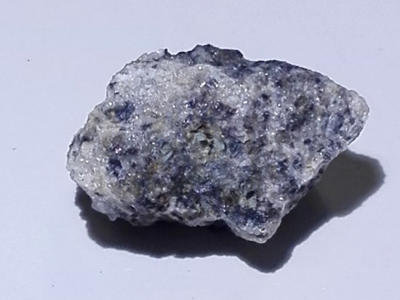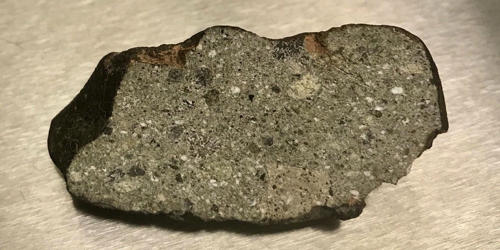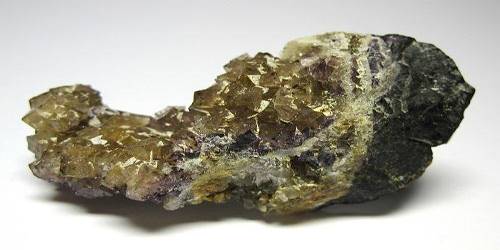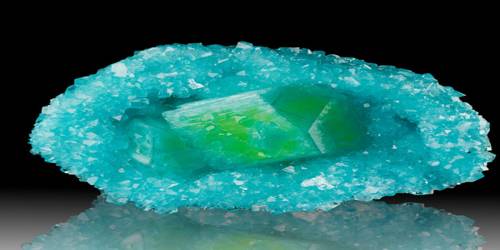Maskelynite is a glassy material found in some meteorites and meteorite impact craters. It is a type of naturally occurring glass having the composition of a plagioclase series feldspar, created by the vitrification of plagioclase by shock melting in meteorites and meteorite impacts. Typical samples are similar in composition to plagioclase feldspar and revert to that mineral when melted and recrystallized.
It was named after British geologist M.H.N. Story-Maskelyne. Since maskelynite (like the volcanic glass obsidian) lacks an orderly arrangement of atoms, it is not considered a “mineral” by geologists and is not listed as such by the Mineralogical Society of America.

History
The phase was first identified in the Shergotty meteorite by G. Tschermak (1872) as an isotropic glass of an unknown origin with near labradorite composition. Similar phrases were found in chondrites and Martian meteorites. Lingunite nanocrystals and amorphous plagioclase (maskelynite) are identified at the contacts between augite and labradorite wedge-shaped interfaces in the doleritic rocks of the Locke impact structure in Sweden. In 1963, D. J. Milton and P. S. de Carli produced a maskelynite-like glass by subjecting gabbro to an explosive shock wave. In 1967, T. E. Bunch and others identified maskelynite in the Clearwater West and Manicouagan craters. High shock-induced temperatures are manifested by maskelynite injections into microfractures in augite located next to the wedges.
Origin
At first, maskelynite was believed to result from the solid-state transformation of plagioclase into dialectic glass by a relatively low-pressure shock wave (250 to 300 kilobars) and low-temperature (350 °C), as in Milton and de Carli’s experiment. The occurrence of lingunite suggests that the local pressure was above 19 GPa and the local temperature overwhelmed 1000 °C. Since 1997 this hypothesis has been challenged, and now it is believed that the glass is formed by the quenching of dense mineral melts produced by higher-pressure shock waves.
Information Source:
















